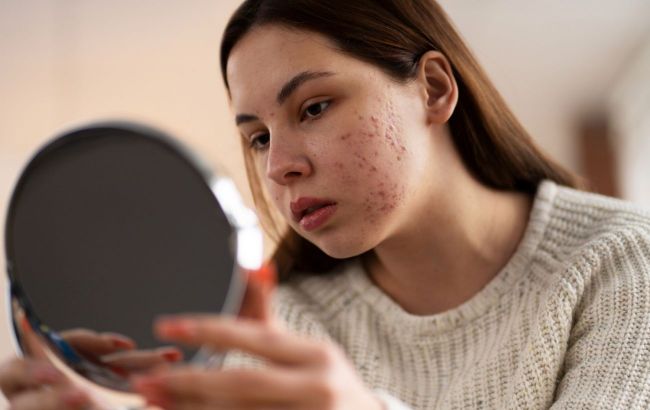Dermatologist names products that can safely mask acne and psoriasis
 Dermatologist tells how to mask skin problems (photo: Freepik)
Dermatologist tells how to mask skin problems (photo: Freepik)
Dermatological diseases are mostly chronic, and it's worth knowing how to properly disguise them on the face. In particular, there are products that are supposedly considered safe for the skin, states Ukrainian dermatologist Kateryna Bakiko.
What is dermatological camouflage
Medical camouflage of skin features helps people feel more confident.
It is a masking of skin imperfections, diseases, scars, and marks. This can be done with the help of cosmetics or tattoos. Forget about the ban on using makeup if your skin is sore.
With the right strategy, such products will not harm you but will help you feel better while you are being treated.
Who is it for
If there is a rash on the face - acne, rosacea, dermatitis. On the body - psoriasis, eczema. Also in vitiligo, hemangiomas, pigmented birthmarks, moles, scars, vascular lesions, pigmentation, melasma, burn marks, and unwanted tattoos.
The rash is masked mainly on the face, but it can also be used on the hands, neck, and other exposed skin areas.
When masking is contraindicated
Do not apply concealers to the skin if you have skin cancer, infections, allergies or irritations to cosmetic ingredients, or an unexplained, undiagnosed rash.
First, you should consult your doctor and ask if it is possible to mask the disease in your case. This is because sometimes improperly selected remedies can provoke exacerbation and worsening of the disease.
What types of camouflage are there
The easiest method is to simply mask skin changes with makeup. Foundation, concealer, contouring products, and color correctors are suitable for this purpose.
All these products should be waterproof, long-lasting, non-comedogenic, hypoallergenic, and with SPF protection. Toning products are available for both facial skin and large areas of the body.
Concealers are suitable for localized masking - postoperative scars, eyelids, pigmentation, scars, and moles. A makeup artist will help you choose the right products and learn how to use them. It may take time and practice to find your own product and technique.
How to mask rosacea
After cleansing and morning care, apply a primer or moisturizer with a greenish tint to neutralize redness. Apply green concealer locally and blend.
Then apply a foundation that matches your skin tone, blend lightly, and set with powder. It is advisable to choose one of the products with SPF protection.
How to mask acne
After your morning skincare routine, apply a gel-like, oil-free moisturizer. If acne is red and inflamed, neutralize it with a green concealer. Next, apply a matte foundation and powder if necessary.
You can refresh the mattifying powder throughout the day or use mattifying wipes if your skin is oily.
How to mask eczema, psoriasis, dermatitis
Before masking, be sure to moisturize the skin with an emollient. You can apply oil to areas with peeling.
Use a cream concealer on the affected areas and apply a moisturizing foundation on top. You can use a moisturizing spray throughout the day.
How to rinse off properly
You should cleanse your skin thoroughly every night. Since cosmetics are quite dense, first use an oily product (hydrophilic oil, cleanser, or balm) and then a regular cleansing gel.
After cleansing, be sure to apply a moisturizer suitable for your skin type to all these areas.
Earlier we reported about 5 skincare trends you should never use.
This material is for informational purposes only and should not be used for medical diagnosis or self-treatment. Our goal is to provide readers with accurate information about symptoms, causes, and methods of detecting diseases. RBС-Ukraine is not responsible for any diagnoses that readers may make based on materials from the resource. We do not recommend self-treatment and advise consulting a doctor in case of any health concerns.

